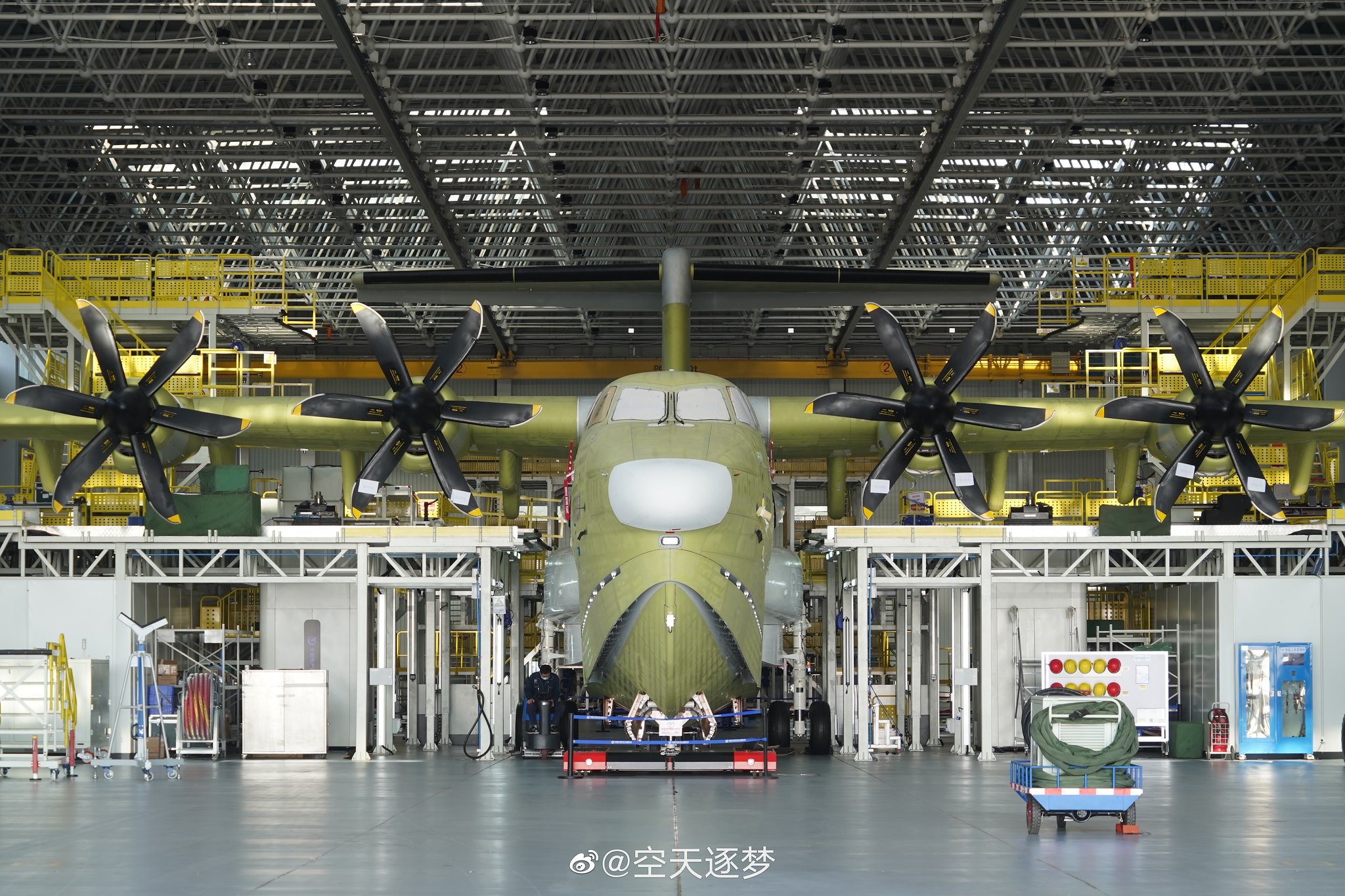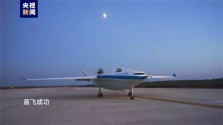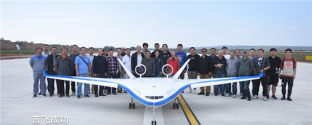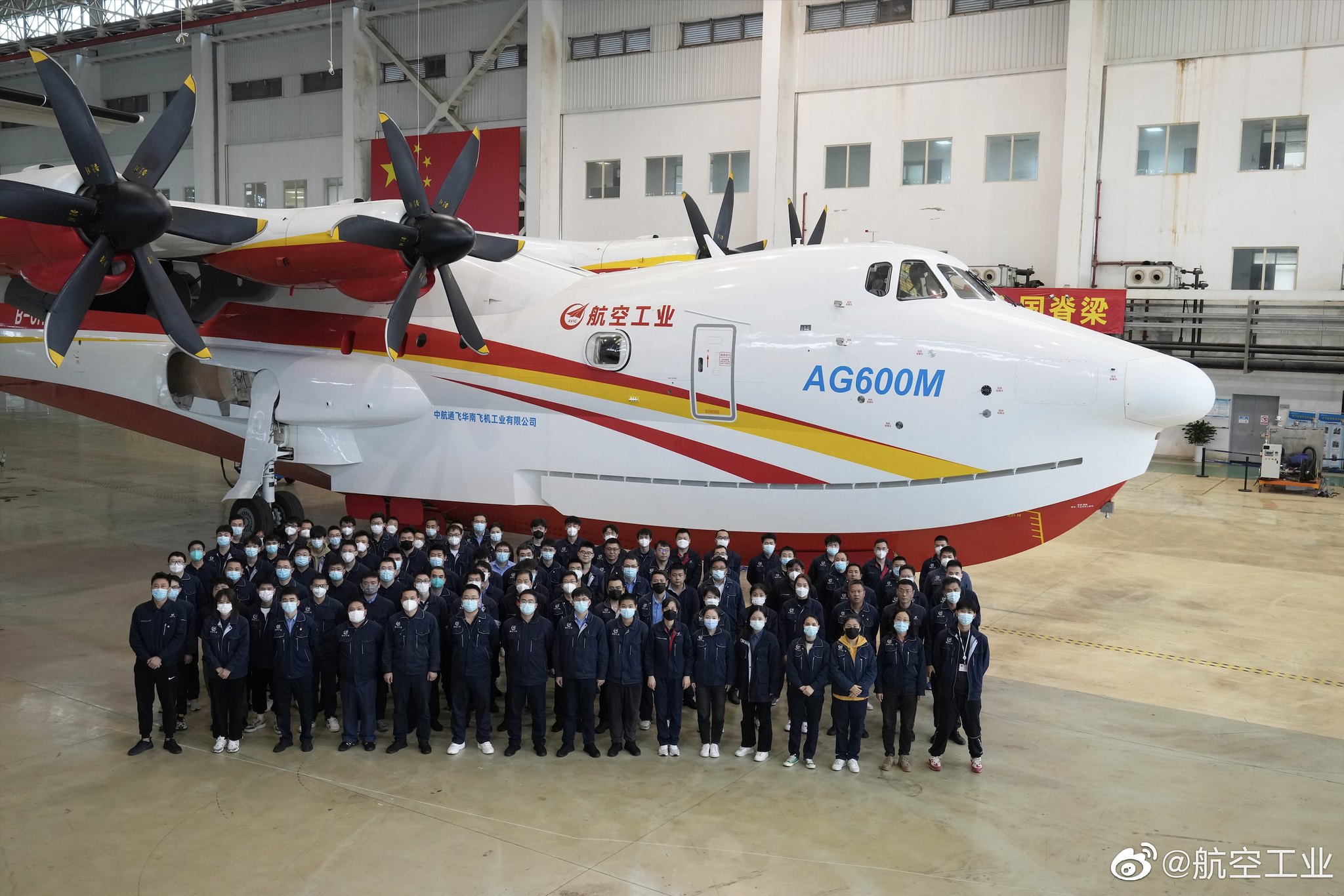You are using an out of date browser. It may not display this or other websites correctly.
You should upgrade or use an alternative browser.
You should upgrade or use an alternative browser.
Chinese Aviation Industry
- Thread starter FriedRiceNSpice
- Start date
by78
General
春节前夕,两架AG600M分别从珠海和宜昌成功转场至西安阎良。今年,AG600将围绕“年中具备执行灭火任务能力,完成40%表明符合性试飞”目标,并行开展典型任务场景试飞、铁鸟试验、试验室验证试验和静力机研发试验、验证试验、适航验证试等试验试飞任务,确保明年底取得型号合格证...
Two AG600Ms have been transferred the China Flight Test Establishment at Yanliang earlier this year. By the middle of 2023, AG600M is expected to demonstrate its firefighting capabilities and complete 40% of scheduled flight and other tests as part of its airworthiness certification.



NPU tested a scaled-down model of its large blended wing-body concept airliner.
据央视新闻报道,西北工业大学研制的翼身融合大型客机的缩比试验机日前在陕西靖边通用机场试飞成功,这是翼身融合民机技术研究的重要里程碑节点。
据了解,目前国际通用的传统民航飞机是由一个类似于圆柱体的机身和机翼、尾翼、发动机构成的。这种老式机翼和机身有着明显界线的传统布局,经过数十年的发展,其空气动力效率已几近极限,飞机的油耗、噪声、有害气体排放等环保指标无法进一步降低。
而翼身融合民机外形拥有宽扁的机身,极具流线感,机身和机翼之间过渡光滑,没有明显的界线,机舱位于微微鼓起的机身下方。
这种机翼、机身融为一体的飞机,气动效率高、结构重量轻、装载空间大、节能、环保,是未来民机的发展方向。
西北工业大学团队在国际上率先提出“后体加长翼身融合布局”新概念,攻克并掌握了总体、气动、飞机-发动机匹配、飞行控制等一批系列关键设计技术,并在飞机系列化发展、中央机体特殊结构、噪声抑制等技术方面取得了重要进展。
团队形成的翼身融合民机概念方案采用了单排16座设计,为乘客提供了宽敞舒适的乘坐环境。
经过长期研究,团队设计的翼身融合民机概念方案的综合性能已处于国际领先水平。


据央视新闻报道,西北工业大学研制的翼身融合大型客机的缩比试验机日前在陕西靖边通用机场试飞成功,这是翼身融合民机技术研究的重要里程碑节点。
据了解,目前国际通用的传统民航飞机是由一个类似于圆柱体的机身和机翼、尾翼、发动机构成的。这种老式机翼和机身有着明显界线的传统布局,经过数十年的发展,其空气动力效率已几近极限,飞机的油耗、噪声、有害气体排放等环保指标无法进一步降低。
而翼身融合民机外形拥有宽扁的机身,极具流线感,机身和机翼之间过渡光滑,没有明显的界线,机舱位于微微鼓起的机身下方。
这种机翼、机身融为一体的飞机,气动效率高、结构重量轻、装载空间大、节能、环保,是未来民机的发展方向。
西北工业大学团队在国际上率先提出“后体加长翼身融合布局”新概念,攻克并掌握了总体、气动、飞机-发动机匹配、飞行控制等一批系列关键设计技术,并在飞机系列化发展、中央机体特殊结构、噪声抑制等技术方面取得了重要进展。
团队形成的翼身融合民机概念方案采用了单排16座设计,为乘客提供了宽敞舒适的乘坐环境。
经过长期研究,团队设计的翼身融合民机概念方案的综合性能已处于国际领先水平。


I think it’s massive because the applications are limited only by innovation. the political ramifications are just as big.I'd be interested to know how big a market there is for AG600M, both in China and worldwide.
Imagine Chinese tourists arriving in the Solomon’s islands in these, for example.
I have also been wondering if these aircraft can turn large reservoirs into airports, effectively. China has been making a lot of reservoirs in the last year.
lcloo
Major
It is a very small market, and most of the aircraft are expected to be used for forest fire fighting instead of passenger airliners.I'd be interested to know how big a market there is for AG600M, both in China and worldwide.
Currently, significant modern large amphibians in service are
1. Beriev Be-200 reported at 17 aircraft sold since 1998.
2. Bombardier CL-415, around 95 aircraft sold since 1993.
Being a very specialised aircraft, AG600M would be very difficult to compete with other land based passenger airliners in term of cost of operations and maintenance. And in island hopping flights, smaller (10 to 20 seaters) planes are preferred, such as Beaver float plane.
However, it should excel in forest fire fighting. If AG600 can sell beyond 100 aircraft in civilian market, it would be a great achievement, considering that the best seller (for aircraft built after 1990s) Bombardier CL-415 sold less than 100 planes in 30 years.
I this might be one of the few ways to transport large objects or people to a remote island quickly and then retrieve them. That's got to be useful for something...I'd be interested to know how big a market there is for AG600M, both in China and worldwide.
It's a useful aircraft for supporting China's military bases in the South China Sea. Could it also have a CSAR role similar to Japan's US-2?It is a very small market, and most of the aircraft are expected to be used for forest fire fighting instead of passenger airliners.
Currently, significant modern large amphibians in service are
1. Beriev Be-200 reported at 17 aircraft sold since 1998.
2. Bombardier CL-415, around 95 aircraft sold since 1993.
Being a very specialised aircraft, AG600M would be very difficult to compete with other land based passenger airliners in term of cost of operations and maintenance. And in island hopping flights, smaller (10 to 20 seaters) planes are preferred, such as Beaver float plane.
However, it should excel in forest fire fighting. If AG600 can sell beyond 100 aircraft in civilian market, it would be a great achievement, considering that the best seller (for aircraft built after 1990s) Bombardier CL-415 sold less than 100 planes in 30 years.
Doubt it will gain much traction as a civilian transport - execpt for limited markets that require landing on water. Twin-engined turboprops like ATR and - if it ever gets into service - the MA700 can serve regional routes far more economically.
Yes, AVIC said CSAR is also AG600's role. Most of the orders will be for CSAR and firefighting.It's a useful aircraft for supporting China's military bases in the South China Sea. Could it also have a CSAR role similar to Japan's US-2?
For civil transport, AG600 has very limited application: high pax demand to fill its cabin, with open water, impossible to build an airport. That's why we only see small seaplanes nowadays. They are more flexible to operate. And as you said, twin-engined turboprops have better performance. They can take off and land with short runways, better economic performance, more comfortable for passengers.Doubt it will gain much traction as a civilian transport - execpt for limited markets that require landing on water. Twin-engined turboprops like ATR and - if it ever gets into service - the MA700 can serve regional routes far more economically.
Btw, I am surprised to see that there are no island hopper routes on those Chinese islands in the South Sea.






